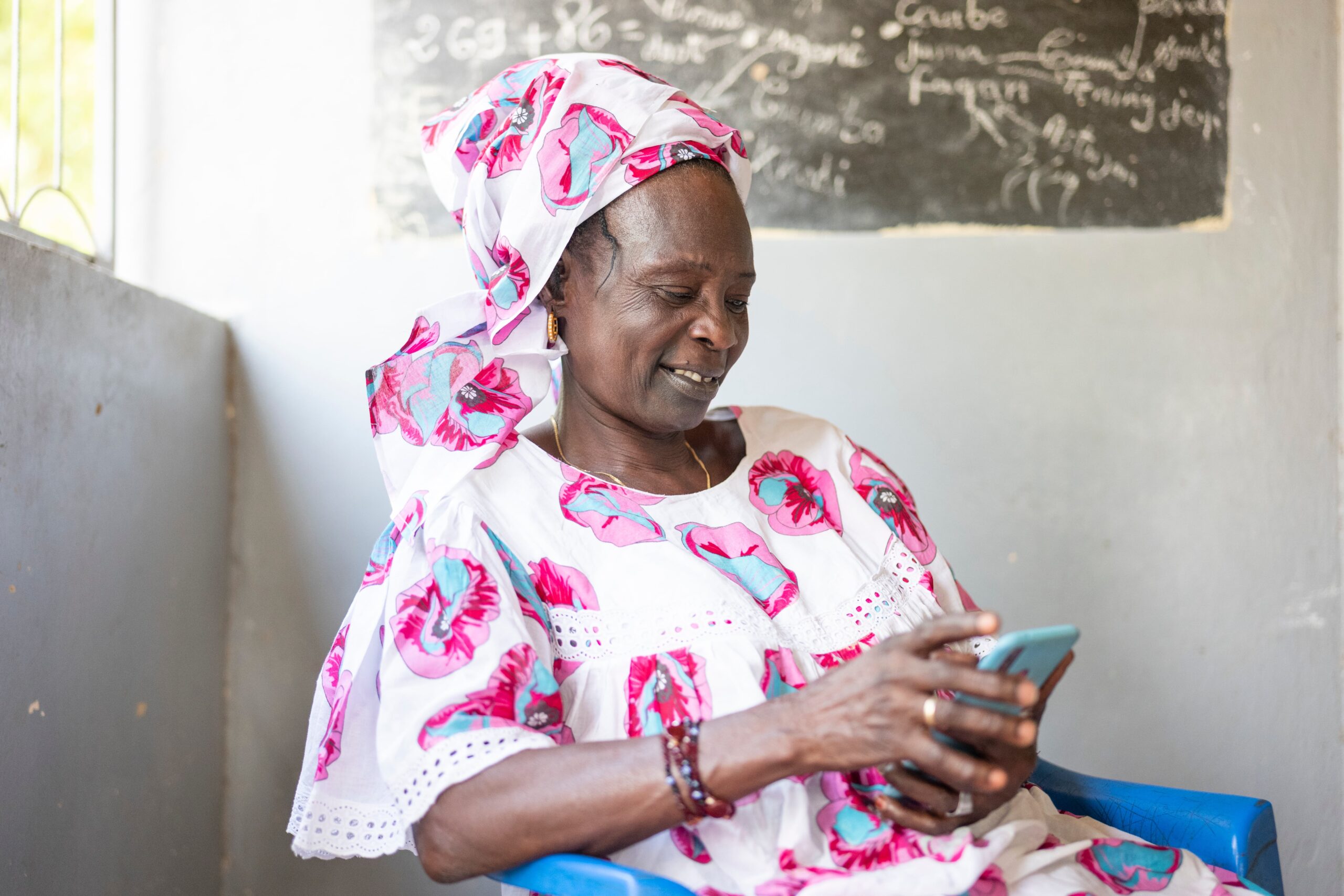
Experts Gather to Discuss Women's Impact on Global Food Security at DialogueNEXT Conference
By Heifer International | April 2, 2024
May 16, 2024
For all the heated debate over the risks and role of artificial intelligence (AI), its potential is arguably greatest for the world’s 600 million smallholder farmers, who have so far missed out on the benefits of the data revolution.
These farmers often work on less than two hectares (five acres) each yet produce around a third of the world’s food supply. But low levels of literacy and numeracy, combined with their remote locations, mean they are typically excluded from the formal economy. The result is that economic statistics do not fully reflect their essential contributions or the challenges and inequalities they face in achieving a living income.
But this could change if the development sector, including aid agencies, embraces and invests in the full extent of AI’s ability to harness data to support and transform rural communities and economies.
Smallholder farmers in low-income countries have historically missed out on credit, market access and other services, including insurance and even carbon credits, because of a lack of data on their operations.
Without formal records and evidence of their harvests, sales and profits, they are considered high-risk and unbankable, perpetuating a cycle of poverty by denying them access to the very services that would improve productivity and profitability.
Although several digital innovations for small-scale agriculture have tried to address this, the overall impact on smallholder farmers’ incomes has remained modest. For instance, Safaricom’s digital mapping tool DigiFarm boasts more than a million registered users, yet as of 2020, active user engagement was less than 24%.
However, the development sector has an opportunity to use AI to fill in the data gaps at scale and elevate these farmers from invisibility to influence, ensuring they have equitable access to the tools and resources that drive modern agriculture forward.
Advances in AI offer the chance to bridge the digital divide by enabling nonprofits, start-ups and social enterprises to create solutions that deliver value to farmers, establishing a virtuous cycle.
For instance, AI can help generate more accessible and shareable data on smallholder production to increase smallholders’ participation in the formal economy.

Optical character recognition (OCR) is one example of AI-based technology that can give smallholder farmers a valuable digital footprint by scanning and digitizing paper-based data like loan agreements and agricultural production records. This helps to effectively formalize the business of smallholder farmers by recording their activities in a universally accepted format.
As part of the “AI for Women Farmers Challenge” in Nepal, for example, FruitPunch AI volunteers are using OCR models to digitize and translate handwritten Nepali text from photos and scans, enabling the data to be searched and analyzed. This process not only makes the data searchable but also analyzable, paving the way for the development of tailored data structures that can be used to support credit or loan applications.
With more information about small-scale agriculture, it becomes easier for development agencies and financial institutions to create valuable products and services that lift smallholder farmers out of subsistence.
Retailers, banks, and insurers already use AI models to price their products. However, they lack datasets big enough to train those models for smallholder farmers because the data is fragmented and often not digital.

By accessing geolocated datasets on historic yield data, yield projection, and loan repayment history, for example, these institutions would be able to de-risk farmers and offer customized financial products and services. Farmers would then have greater access to products specifically tailored to their needs, while service providers would be able to tap into new market segments.
AI can also be harnessed to empower and equip smallholders with better, faster access to expert advice and information, including localized climate forecasts, pest and disease risk, and market prices.
AI platforms leveraging both professional and community-generated expertise, such as Digital Green’s Farmer.CHAT, are already meeting this need. By interacting with users either through text or voice messages via their preferred messaging app, such as WhatsApp or Telegram, AI solutions are also addressing the broader digital literacy gap.
Finally, AI also offers smallholders the ability to monetize their own data as an additional potential revenue stream, and this is the next step in full participation in the digital economy.
With the requirement for vast datasets to train AI models and the lack of significant smallholder data, an opportunity exists to create AI data marketplaces where farmer organizations, such as cooperatives or unions, would offer their pooled data and distribute sales revenue to their members.
However, it is imperative that smallholders’ participation in the AI ecosystem is not exploitative, and that increased data availability is not extractive to benefit only larger market actors. Fully informed data collection consent, communicated in a culturally appropriate manner, and farmers’ ownership of their data are the bare minimum requirements in guaranteeing their equitable involvement and protecting their privacy.
AI undoubtedly offers the development sector a powerful new tool for reducing poverty that should be embedded, refined and constantly updated as part of efforts to support smallholder farmers.
This requires more investment in recruiting and developing talent, as well as building digital literacy and accessibility on the ground. The key now is to upskill, invest, and build the capacity to take full advantage of technology as a force for good.
Cart is empty
Success!
Please be patient while we send you to a confirmation page.
We are unable to process your request. Please try again, or view common solutions on our help page. You can also contact our Donor Services team at 855.9HUNGER (855.948.6437).
Covering the transaction fee helps offset processing and administrative fees that we incur through taking payments online. Covering the transaction fee for each payment helps offset processing and administrative fees that we incur through taking payments online. Covering the transaction fee for each payment helps offset processing and administrative fees that we incur through taking payments online.
Success!
Please be patient while we send you to a confirmation page.
We are unable to process your request. Please try again, or view common solutions on our help page. You can also contact our Donor Services team at 855.9HUNGER (855.948.6437).
When you donate a gift to someone, you'll have the option to create a free card after your donation is complete.

A FREE gift will be sent to supporters who choose to give a monthly gift.
Covering the transaction fee helps offset processing and administrative fees that we incur through taking payments online. Covering the transaction fee for each payment helps offset processing and administrative fees that we incur through taking payments online. Covering the transaction fee for each payment helps offset processing and administrative fees that we incur through taking payments online.

A FREE gift will be sent to supporters who choose to give a monthly gift.